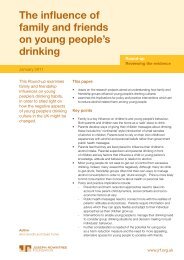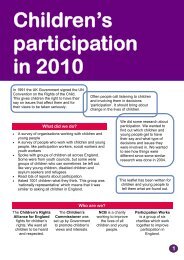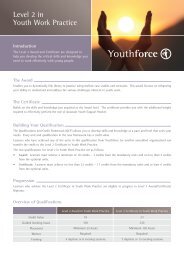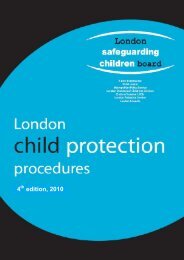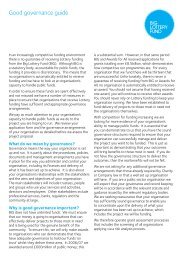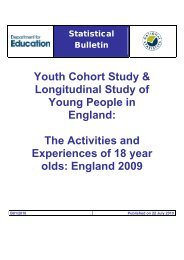cegs occasional papper - Partnership for Young London
cegs occasional papper - Partnership for Young London
cegs occasional papper - Partnership for Young London
- No tags were found...
Create successful ePaper yourself
Turn your PDF publications into a flip-book with our unique Google optimized e-Paper software.
Careers Work with <strong>Young</strong> People: Collapse or Transition?ways and may either build on existing partnership arrangements or develop new arrangementsspecific to the delivery of careers. In Surrey, <strong>for</strong> example, a network of six secondary schools (two withsixth-<strong>for</strong>ms) have negotiated with the local Connexions service to purchase the services of a PersonalAdviser <strong>for</strong> the equivalent of four days a week, shared across the six schools (Morris, 2011). In South-East <strong>London</strong> and Kent, a number of schools have <strong>for</strong>med a Schools Careers <strong>Partnership</strong> to facilitatethe sharing of good practice and enable the exchange of services where appropriate. Elsewhere, oneCareers Co-ordinator described his school’s plans as follows: “I hope to encourage a new set up inthe town where myself, and a few others, from the non-academy schools are trained to the requiredstandard and ‘lent’ around the town <strong>for</strong> some days a week to try and sustain something approachinga universal service.”4. Contracting-in. At the moment the most dominant model seems to be based on a “contracting in”approach. In this model, schools buy a package of career support from an external provider. As with theschool-based model, contracting-in approaches can be based on either a single-school or a multi-schoolapproach. There is, <strong>for</strong> instance, an attempt in Blackburn with Darwen to engage all local schools in acollective contracting arrangement: if this is successful, it will mean that the contract <strong>for</strong> universal careersservices is effectively transferred from the Local Authority to the consortium organisation (EducationImprovement <strong>Partnership</strong>) and that a comparable level of service is preserved. However, this kind ofcomprehensive and collective solution does not appear to be common across the sector.The nature of the relationships that exist between schools and providers is still in flux, but it is possible toidentify a continuum from a quasi-partnership model to a contractor-supplier model (Figure 1).Figure 1: A continuum of contracting-in approachesQuasi-<strong>Partnership</strong>ModelContractor-SupplierModelPreserving elements of the oldConnexions/school partnership.Schools transact with a recognisedbody which offers an authorativequality-assured service.Care support is broadly conceived.Contractual arrangements are longtermand substantial.Moving to clear contractor-supplierrelationship.The school procures career supportfrom a range of providers to meet itsown financial and pedagogicrequirements.Career support is narrowly conceivedas access to interview or resources.Contractual arrangement are shorttermand designed to meet a specificneed.10






